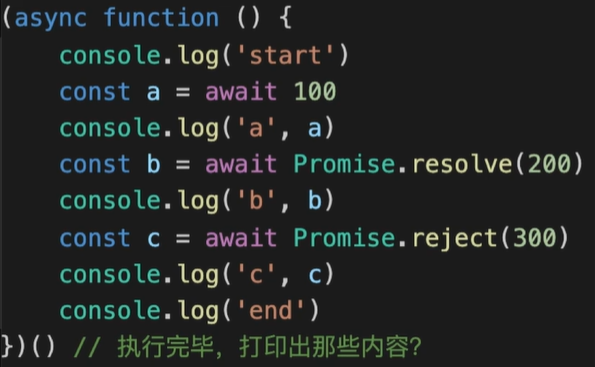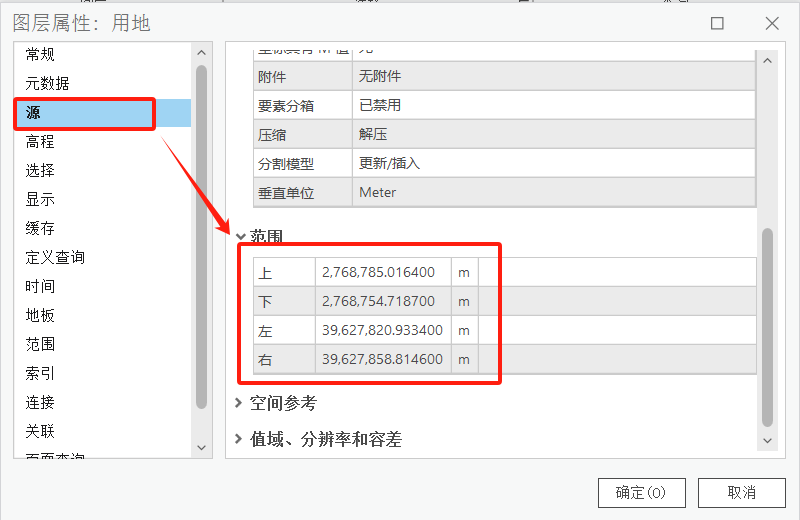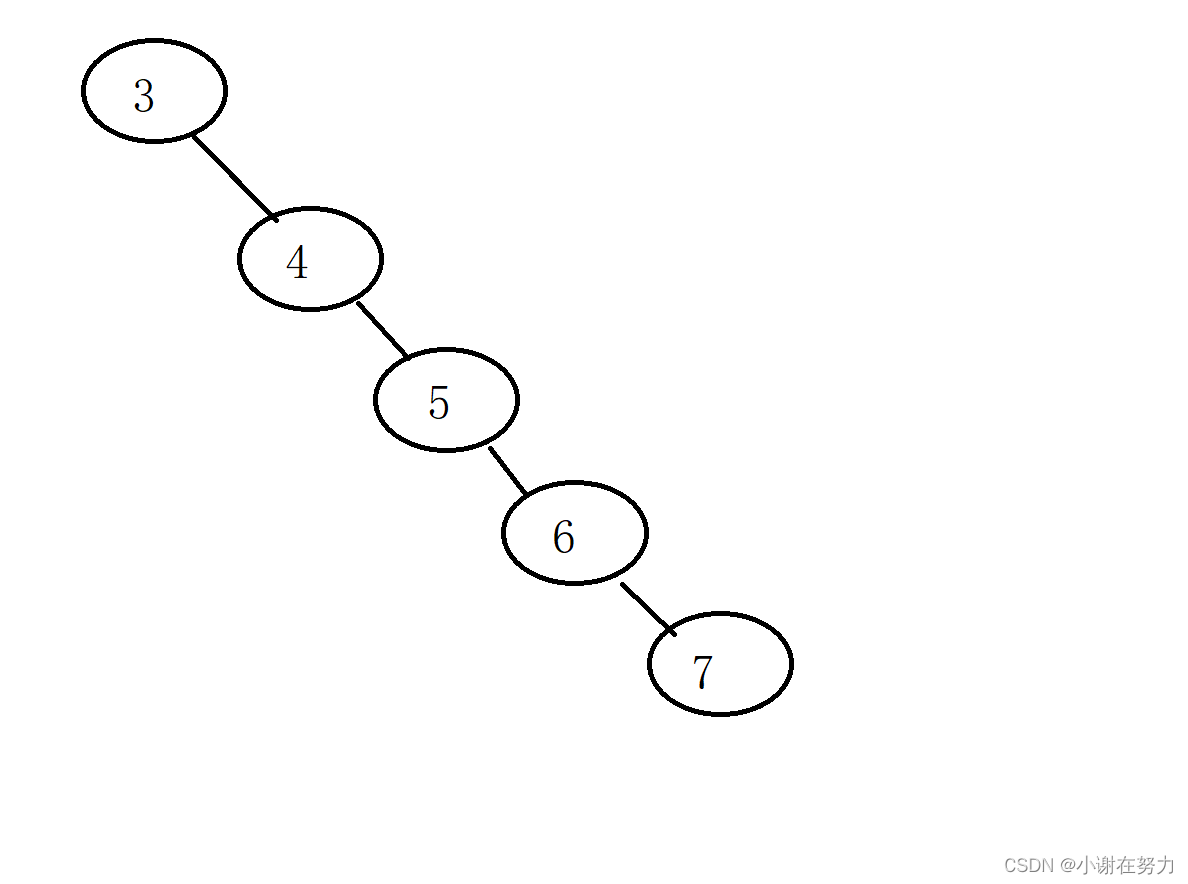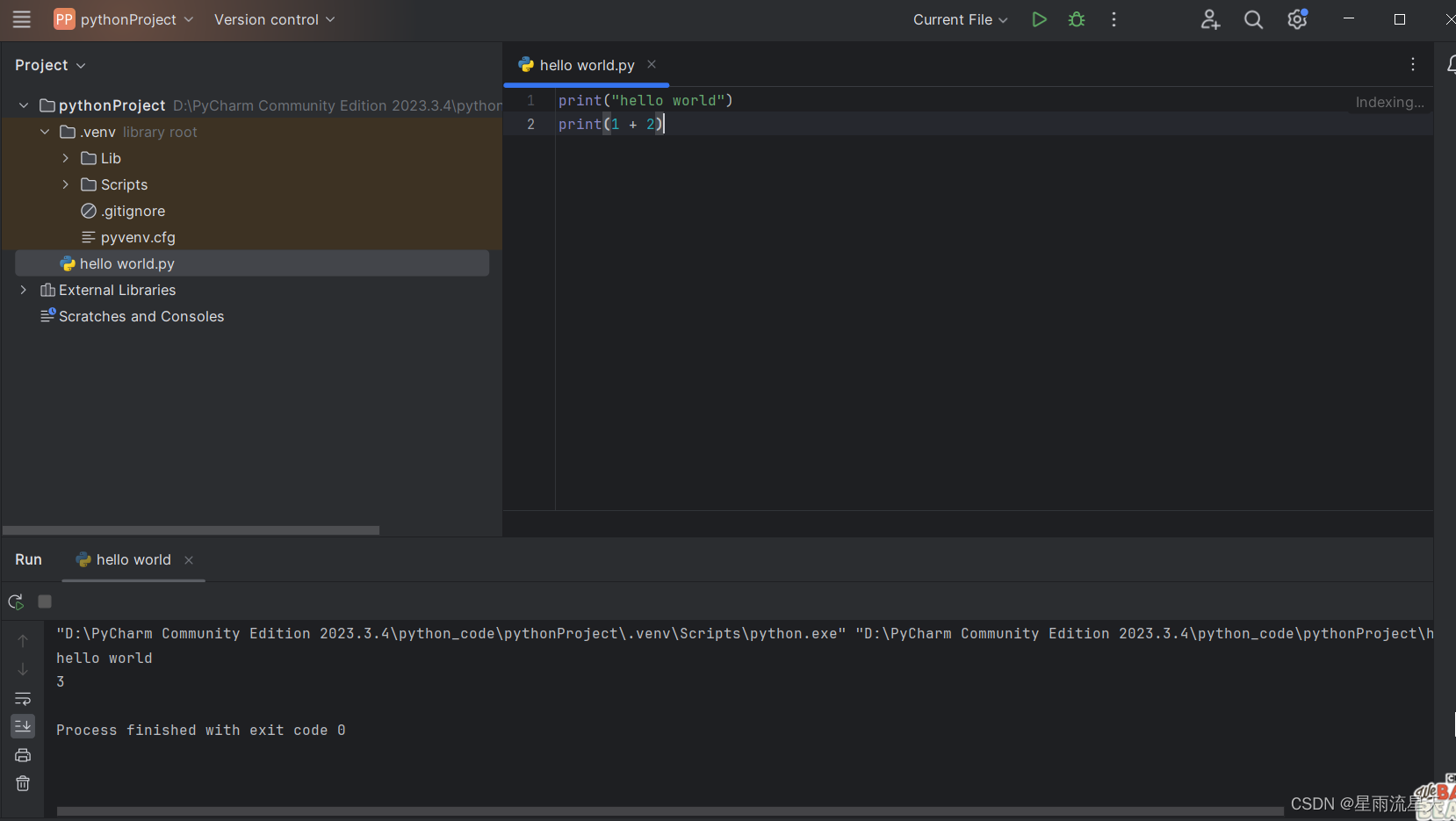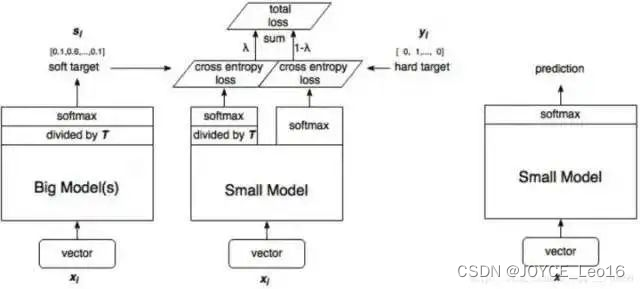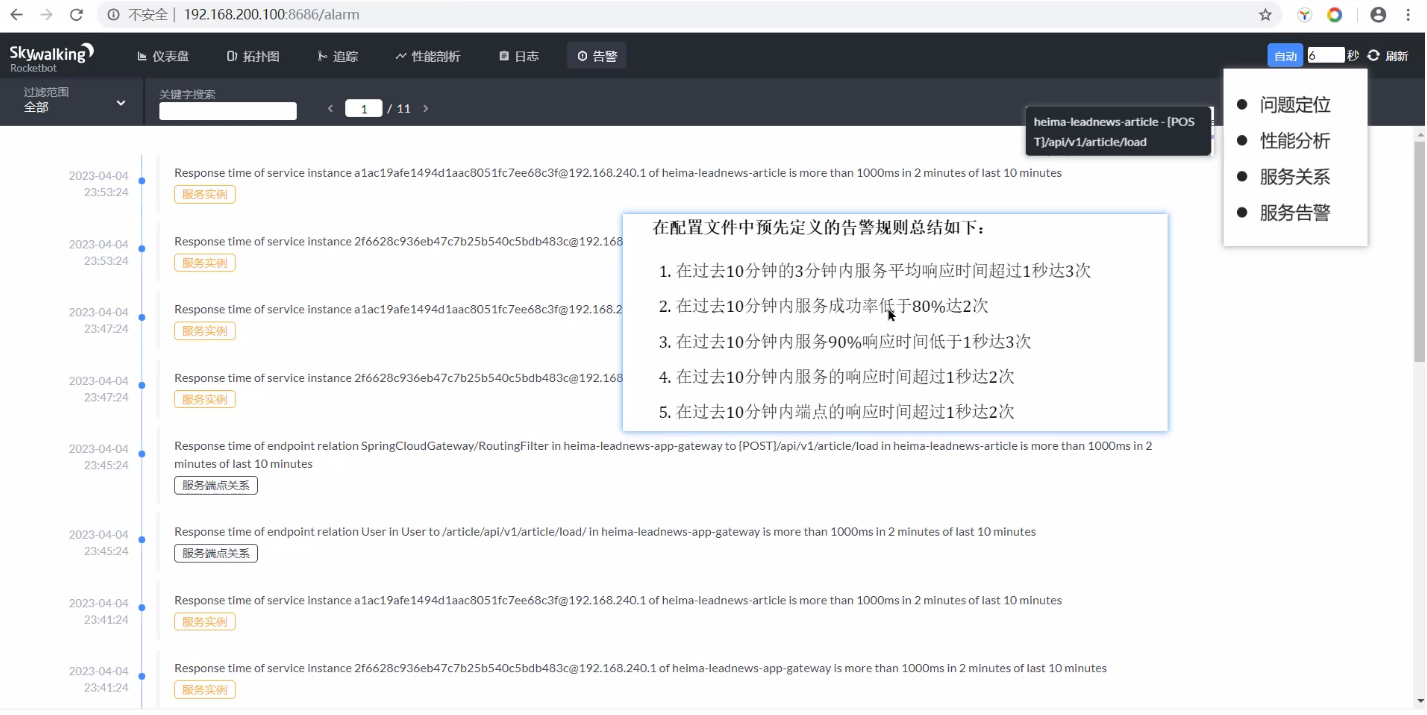神经网络覆盖算法——CCA(基于Ling Zhang 和Bo Zhang论文)
Abstract
在这篇文章中我将介绍基于张铃和张钹学者提出的CCA算法,并实现代码复现,给出使用的数据集,以及实验结果对比。
1. Introduction
1.1 Background
- 我们知道自从1943年 McCulloch和Pitts第一次提出神经元的数学模型以来,神经网络开始逐步得到长足的发展。一个神经元的数学模型如下:

1.2 Motivation
- 但是长久以来人工智能领域的学者都在寻找合理的几何意义,去解释上述神经元。基于此种困境,我国学者张铃和张钹提出覆盖算法(下文都用CCA代替)。
2. Geometrical Representation of Neural Model
2.1 The M-P Neuron
- 我们先从神经元的功能开始聊起,对于一个神经元数学模型 y = sgn ( w x − θ ) y = \text{sgn}(wx - \theta) y=sgn(wx−θ),其中 w w w 和 x x x 都是 n n n 维向量, n n n 取决于输入样本的特征数,而 θ \theta θ 是阈值,也可以被称为偏置, s g n sgn sgn 是一个激活函数,它负责将最后运算的结果映射输出,传递到下一个神经元。
2.2 Sphere Neighborhoods
-
我们先从原来的分类算法的几何意义开始聊起。
假如我们现在有一个数据集,数据集里的数据来自两类,一个是小狗,一个是小猫,小狗的数据样本为 X = ( x 1 , x 2 , x 3 , . . . , x n , L a b e l = 0 ) X=(x1,x2,x3,...,xn,Label=0) X=(x1,x2,x3,...,xn,Label=0),小猫的数据样本为 X = ( x 1 , x 2 , x 3 , . . . , x n , L a b e l = 1 ) X=(x1,x2,x3,...,xn,Label=1) X=(x1,x2,x3,...,xn,Label=1) ,我们这里便于举例子,将小猫和小狗的特征维度假定为2,那我们在二维的向量空间中就可以标记小猫小狗的样本分布,当然为了让分布在空间中分布的更加均匀,我们首先对所有的数据进行归一化。
归一化公式如下:
Normalized Value = x − Min ( x ) Max ( x ) − Min ( x ) \text{Normalized Value} = \frac{x - \text{Min}(x)}{\text{Max}(x) - \text{Min}(x)} Normalized Value=Max(x)−Min(x)x−Min(x)
我们现在绘出样本在二维空间中的分布:

由于如果使用超平面直接划分,则至少需要三个超平面,而且几何意义很难解释,同时在输入向量的时候维度可能不同,因此我们选择将数据升维,即将原来的样本空间投射到n+1维的一个向量空间中,这样可以保证样本长度相同。如图所示:


3. Constructive Algorithm for Neural Networks
下面我们重点介绍本篇文章的重点部分,即CCA的实现步骤。
3.1 归一化输入样本
公式如下
Normalized Value
=
x
−
Min
(
x
)
Max
(
x
)
−
Min
(
x
)
\text{Normalized Value} = \frac{x - \text{Min}(x)}{\text{Max}(x) - \text{Min}(x)}
Normalized Value=Max(x)−Min(x)x−Min(x)
相应代码:
# 对读入的数据进行归一化处理
def normalize_data(data):
# 数据集的最后一列是标签,将其排除在归一化之外
features = data.iloc[:, :-1]
labels = data.iloc[:, -1]
scaler = MinMaxScaler()
# 将特征数据进行归一化
normalized_features = scaler.fit_transform(features)
# 构建归一化后的数据集,包含原标签列
normalized_data_with_labels = pd.DataFrame(normalized_features, columns=features.columns)
normalized_data_with_labels['Label'] = labels
return normalized_data_with_labels
3.2 升维,将样本投影至 n + 1 n+1 n+1 维样本空间
公式如下:
T : X → S n + 1 , T ( x ) = ( x , R 2 − ∥ x ∥ 2 ) T: X \rightarrow S^{n+1}, \quad T(x) = \left(x, \sqrt{R^2 - \lVert x \rVert^2}\right) T:X→Sn+1,T(x)=(x,R2−∥x∥2),其中 R R R是所有输入样本中模值最大的值。
补充说明, ∥ x ∥ 2 = ( x 1 2 + x 2 2 + . . . + x n 2 ) \lVert x \rVert^2 = (x1^2+x2^2+...+xn^2) ∥x∥2=(x12+x22+...+xn2)
举例说明

其中 R = 8 R=8 R=8, 即是 x 4 x4 x4 的模值,因为它最大,由上述公式我们可得

升维完毕。
相应代码:
# 升维函数
def uplift_dimension(normalized_data):
# 计算模最大值
max_norm = torch.norm(torch.tensor(normalized_data.iloc[:, :-1].values, dtype=torch.float32), dim=1).max().item()
# 升维
uplifted_data = []
for i, sample in enumerate(normalized_data.values):
original_norm = torch.norm(torch.tensor(sample[:-1].astype(float)))
uplifted_value = torch.sqrt(max_norm**2 - original_norm**2).item()
uplifted_sample = list(sample[:-1]) + [uplifted_value] + [int(sample[-1])]
uplifted_data.append(uplifted_sample)
# 创建新的 DataFrame
uplifted_columns = list(normalized_data.columns)[:-1] + ['Uplifted'] + [normalized_data.columns[-1]]
uplifted_df = pd.DataFrame(uplifted_data, columns=uplifted_columns)
return uplifted_df
3.3 构造隐层神经元
我们这里采用的是折中半径算法,这里给出我的一些证明。
我们先随机的选中样本空间中的一个样本记为 S a m p l e A Sample_A SampleA,然后找到最小欧几里得距离的异类样本记为 S a m p l e B Sample_B SampleB,距离记为 d 2 d_2 d2,如图所示:

然后我们在此前提下,找出不大于 d 2 d_2 d2的欧几里得距离最大的同类样本 S a m p l e C Sample_C SampleC,距离记为 d 1 d_1 d1,然后取折中半径 d = ( d 1 + d 2 ) / 2 d=(d_1+d_2)/2 d=(d1+d2)/2, 如图所示:

但是我们发现在此种情况下,我们可以使用内积来代替欧几里得距离,证明如下:
欧几里得距离:
这里由于数据已经归一化过了,所以所有的样本模长都等于 R 2 R^2 R2,所以上述距离公式可以化简为 d i s t ( x k , x i ) = 2 R 2 − 2 < x k , x i > dist(x_k,x_i)= \sqrt{2R^2-2<x_k,x_i>} dist(xk,xi)=2R2−2<xk,xi>,其中 < x k , x i > <x_k,x_i> <xk,xi>代表两者的内积,因为 R 2 R^2 R2是一个固定值,所以求最小距离等价于求最大的内积,同理求最大距离等价于求最小的内积。
所以上述问题转化为求最大内积的异类样本点,求最小内积的同类样本点。
对于覆盖模型的数据结构,我们采用以下结构体:
# 定义覆盖结构体
class CoverStruct:
def __init__(self, center, radius, label, index):
self.center = center
self.radius = radius
self.label = label
self.index = index
我们每训练得一个覆盖,就记录他的中心和半径,以及该覆盖的标签,和序号。
相关代码:
def train_covering_nn(self, data):
# 获取样本总数
num_samples = len(data)
print(num_samples)
# 设置已学习样本的集合
learned_samples = set()
# 记录已学习的样本数量
samples_learned_count = 0
cover_index = 0
# 循环的终止条件是训练集中的所有样本都被学习过
while samples_learned_count < num_samples:
# 检查是否还有未学习的样本
remaining_samples = set(range(num_samples)) - learned_samples
print(remaining_samples)
if not remaining_samples:
break # 所有样本都已学习过,提前结束循环
# 随机选择一个未学习的样本A
a_index = random.choice(list(remaining_samples))
print(a_index)
# 选择样本A
a_sample = torch.tensor(data.iloc[a_index, :-1].values, dtype=torch.float32)
print(a_sample)
# 找到异类样本B和内积值d1
# 从数据集中选择标签与样本A不同的所有样本
# 排除已经学习过的样本
b_samples = data[(data.index.isin(remaining_samples)) & (data['Label'] != data.iloc[a_index, -1])]
# 检查是否有这样的样本
if len(b_samples) > 0:
# 将所选样本的特征值转换为 PyTorch 张量
b_samples_values = torch.tensor(b_samples.iloc[:, :-1].values, dtype=torch.float32)
print(b_samples_values)
# 计算每个b_samples中的样本与样本A的内积
inner_products = torch.matmul(b_samples_values, a_sample)
print(inner_products)
# 找到b_samples中具有最大内积的样本的索引
b_sample_index = inner_products.argmax().item()
print("b_sample_index:", b_sample_index)
# 提取具有最大内积的样本
b_sample = b_samples_values[b_sample_index]
print("b_sample:", b_sample)
# 提取最大内积的值
d1 = inner_products[b_sample_index].item()
else:
# 如果b_samples中没有样本,则将d1设为0
d1 = 0
print("Max inner_product", d1)
# 找到同类样本C和内积值d2
# 从数据集中选择标签与样本A相同的所有样本
c_samples = data[(data.index.isin(remaining_samples)) & (data['Label'] == data.iloc[a_index, -1])]
# 检查是否有这样的样本
# 将所选样本的特征值转换为 PyTorch 张量
c_samples_values = torch.tensor(c_samples.iloc[:, :-1].values, dtype=torch.float32)
# 计算每个c_samples中的样本与样本A的内积
inner_products_c = torch.matmul(c_samples_values, a_sample)
valid_inner_products_indices = (inner_products_c > d1).nonzero().view(-1)
if len(valid_inner_products_indices) > 0:
min_inner_product_index = torch.argmin(inner_products_c[valid_inner_products_indices]).item()
# 提取具有最小内积的样本
c_sample = c_samples_values[valid_inner_products_indices[min_inner_product_index]]
print("c_sample:", c_sample)
# 提取最小内积的值
d2 = inner_products_c[valid_inner_products_indices[min_inner_product_index]].item()
else:
# 如果没有满足条件的样本,则将d2设为d1
d2 = d1
print("Min inner_product", d2)
# 如果d2 > d1,则更新覆盖模型
if d2 >= d1:
d = (d1 + d2) / 2
learned_samples.add(a_index)
# 创建新的覆盖结构体,其中包括样本A、覆盖半径d和样本A的标签
new_cover = CoverStruct(a_sample, d, data.iloc[a_index, -1], cover_index)
# 每个覆盖相当于一个神经元
# 将新的覆盖添加到模型的覆盖列表中
self.cover_list.append(new_cover)
# 更新已学习样本的集合,将在新覆盖中的样本标记为已学习
learned_samples.update(get_covered_samples(data, new_cover))
# 更新已学习的样本数量
samples_learned_count = len(learned_samples)
print("已学习的样本数量", samples_learned_count)
cover_index += 1
print("训练完成。")
cover_data = {
'Center': [cover.center.numpy() for cover in self.cover_list],
'Radius': [cover.radius for cover in self.cover_list],
'Label': [cover.label for cover in self.cover_list],
'Index': [cover.index for cover in self.cover_list]
}
cover_df = pd.DataFrame(cover_data)
print("\n覆盖列表的数据框形式:")
print(cover_df)
3.4 测试过程
我们采用十折交叉验证,这里解释一下十折交叉验证(图片来自周志华老师的《机器学习》):

验证的过程是,每个测试集测试的时候,我们逐个验证覆盖列表中的每一个覆盖,顺序遍历每一个覆盖,直到找到一个覆盖能包含测试样本为止,然后预测标签就等于覆盖标签,如果遍历所有覆盖我们都没有找能够包含测试样本的覆盖,那么我们选取距离覆盖中心内积值最大的(即距离中心欧几里得距离最小的)覆盖的覆盖标签作为预测标签。
相关代码:
def test_covering_nn(self, test_data):
all_outputs = []
for _, test_sample in test_data.iterrows():
outputs = []
test_sample_tensor = torch.tensor(test_sample[:-1].values, dtype=torch.float32)
for cover in self.cover_list:
inner_product = torch.matmul(test_sample_tensor, cover.center)
result = 1 if inner_product > cover.radius else 0
output = CoveringResult(cover.label, result)
outputs.append(output)
# 找到第一个被覆盖的样本
covered_sample = None
for output in outputs:
if output.result == 1:
covered_sample = output
break
# 如果有被覆盖的样本,则返回整个列表
if covered_sample is not None:
all_outputs.append(covered_sample.label)
# 如果没有任何一个覆盖包含测试样本,则返回内积最大的元素的标签
else:
max_inner_product_index = None
max_inner_product_value = float('-inf')
for i, output in enumerate(outputs):
if output.result > max_inner_product_value:
max_inner_product_value = output.result
max_inner_product_index = i
if max_inner_product_index is not None:
max_inner_product_label = outputs[max_inner_product_index].label
all_outputs.append(max_inner_product_label)
# 使用占位符值 -1 替换 None 值
all_outputs = [label if label is not None else -1 for label in all_outputs]
# 确保总是返回与测试样本数相匹配的预测标签列表
return all_outputs if all_outputs else [-1] * len(test_data)
4. Results and Comparison
| Database | CCA(accuracy) | My_CCA(accuracy) | Accuracy Difference |
|---|---|---|---|
| Haberman+s+survival | 65.30% | 70.24% | 4.94% |
| Fertility | 80.48% | 81.20% | 0.72% |
| Ionosphere | 90.77% | 91.43% | 0.66% |
5. Reflection
这是本人自己第一次实现一个简单的神经网络,经历了日日夜夜的写代码,改代码的痛苦过程,当最后的预测结果和论文差不多时,心情是非常激动的,在此之前,我对神经网络的认识仅仅停留在输入层,输出层,Hidden Layer,还有激活函数,优化等名词,我的总结是人工智能这门课,你不能当作一门理论课去学习,而是应当当作一门实验课去学习,甚至是当作一门语言去学习,我指的是你需要写大量的代码来提高自己的能力。做永远比想更为重要!
6.Resource
数据集来源:
https://archive.ics.uci.edu/datasets?skip=10&take=10&sort=desc&orderBy=NumHits&search=Glass
开源代码:
Pytorch的安装方法可以参考CSDN上其他热门答主的回答。
import torch
import torch.nn as nn
import numpy as np
import pandas as pd
from sklearn.preprocessing import MinMaxScaler
from sklearn.model_selection import KFold
import random
from sklearn.metrics import accuracy_score
from sklearn.preprocessing import LabelEncoder
from sklearn.impute import SimpleImputer
# 定义覆盖结构体
class CoverStruct:
def __init__(self, center, radius, label, index):
self.center = center
self.radius = radius
self.label = label
self.index = index
# 定义输出结构体
class CoveringResult:
def __init__(self, label, result):
self.label = label
self.result = result
def get_covered_samples(data, cover):
# 找到在给定覆盖中的样本集合
covered_samples = set()
for i, sample in data.iterrows():
sample_values = torch.tensor(sample[:-1].values, dtype=torch.float32)
# 计算样本到覆盖中心的内积
inner_product = torch.dot(sample_values, torch.tensor(cover.center))
# 如果距离大于等于覆盖半径,将该样本加入集合
if inner_product >= cover.radius:
covered_samples.add(i)
return covered_samples
# 定义模型
class CoveringNN(nn.Module):
def __init__(self, input_size):
super(CoveringNN, self).__init__()
self.cover_list = []
self.input_size = input_size
# 我们使用内积来转换欧几里得距离函数,这里我给出自己的一些证明,内积<X1,X2>=X1.1*X2.1+...X1.n*X2.n
# 欧几里得距离函数,(X1-X2)^2=X1.1^2+X1.2^2+...+X1.n^2+X2.1^2+X2.2^2+X2.n^2-2*(X1.1*X2.1+...X1.n*X2.n)
# 要将此处转换,必须保证的前提是,每个样本的模长相等,我们经过归一化之后,每个样本的模长是R(即是所有样本中最大的模长)
# 使用折中半径法,对于没有d1的情况,我们可以使用最大的同类样本距离去度量,即大于最小同类样本内积即可
# 对于没有d2的情况,使用最小的异类样本距离,即用小于最大的异类样本内积即可
def train_covering_nn(self, data):
# 获取样本总数
num_samples = len(data)
print(num_samples)
# 设置已学习样本的集合
learned_samples = set()
# 记录已学习的样本数量
samples_learned_count = 0
cover_index = 0
# 循环的终止条件是训练集中的所有样本都被学习过
while samples_learned_count < num_samples:
# 检查是否还有未学习的样本
remaining_samples = set(range(num_samples)) - learned_samples
print(remaining_samples)
if not remaining_samples:
break # 所有样本都已学习过,提前结束循环
# 随机选择一个未学习的样本A
a_index = random.choice(list(remaining_samples))
print(a_index)
# 选择样本A
a_sample = torch.tensor(data.iloc[a_index, :-1].values, dtype=torch.float32)
print(a_sample)
# 找到异类样本B和内积值d1
# 从数据集中选择标签与样本A不同的所有样本
# 排除已经学习过的样本
b_samples = data[(data.index.isin(remaining_samples)) & (data['Label'] != data.iloc[a_index, -1])]
# 检查是否有这样的样本
if len(b_samples) > 0:
# 将所选样本的特征值转换为 PyTorch 张量
b_samples_values = torch.tensor(b_samples.iloc[:, :-1].values, dtype=torch.float32)
print(b_samples_values)
# 计算每个b_samples中的样本与样本A的内积
inner_products = torch.matmul(b_samples_values, a_sample)
print(inner_products)
# 找到b_samples中具有最大内积的样本的索引
b_sample_index = inner_products.argmax().item()
print("b_sample_index:", b_sample_index)
# 提取具有最大内积的样本
b_sample = b_samples_values[b_sample_index]
print("b_sample:", b_sample)
# 提取最大内积的值
d1 = inner_products[b_sample_index].item()
else:
# 如果b_samples中没有样本,则将d1设为0
d1 = 0
print("Max inner_product", d1)
# 找到同类样本C和内积值d2
# 从数据集中选择标签与样本A相同的所有样本
c_samples = data[(data.index.isin(remaining_samples)) & (data['Label'] == data.iloc[a_index, -1])]
# 检查是否有这样的样本
# 将所选样本的特征值转换为 PyTorch 张量
c_samples_values = torch.tensor(c_samples.iloc[:, :-1].values, dtype=torch.float32)
# 计算每个c_samples中的样本与样本A的内积
inner_products_c = torch.matmul(c_samples_values, a_sample)
valid_inner_products_indices = (inner_products_c > d1).nonzero().view(-1)
if len(valid_inner_products_indices) > 0:
min_inner_product_index = torch.argmin(inner_products_c[valid_inner_products_indices]).item()
# 提取具有最小内积的样本
c_sample = c_samples_values[valid_inner_products_indices[min_inner_product_index]]
print("c_sample:", c_sample)
# 提取最小内积的值
d2 = inner_products_c[valid_inner_products_indices[min_inner_product_index]].item()
else:
# 如果没有满足条件的样本,则将d2设为d1
d2 = d1
print("Min inner_product", d2)
# 如果d2 > d1,则更新覆盖模型
if d2 >= d1:
d = (d1 + d2) / 2
learned_samples.add(a_index)
# 创建新的覆盖结构体,其中包括样本A、覆盖半径d和样本A的标签
new_cover = CoverStruct(a_sample, d, data.iloc[a_index, -1], cover_index)
# 每个覆盖相当于一个神经元
# 将新的覆盖添加到模型的覆盖列表中
self.cover_list.append(new_cover)
# 更新已学习样本的集合,将在新覆盖中的样本标记为已学习
learned_samples.update(get_covered_samples(data, new_cover))
# 更新已学习的样本数量
samples_learned_count = len(learned_samples)
print("已学习的样本数量", samples_learned_count)
cover_index += 1
print("训练完成。")
cover_data = {
'Center': [cover.center.numpy() for cover in self.cover_list],
'Radius': [cover.radius for cover in self.cover_list],
'Label': [cover.label for cover in self.cover_list],
'Index': [cover.index for cover in self.cover_list]
}
cover_df = pd.DataFrame(cover_data)
print("\n覆盖列表的数据框形式:")
print(cover_df)
def test_covering_nn(self, test_data):
all_outputs = []
for _, test_sample in test_data.iterrows():
outputs = []
test_sample_tensor = torch.tensor(test_sample[:-1].values, dtype=torch.float32)
for cover in self.cover_list:
inner_product = torch.matmul(test_sample_tensor, cover.center)
result = 1 if inner_product > cover.radius else 0
output = CoveringResult(cover.label, result)
outputs.append(output)
# 找到第一个被覆盖的样本
covered_sample = None
for output in outputs:
if output.result == 1:
covered_sample = output
break
# 如果有被覆盖的样本,则返回整个列表
if covered_sample is not None:
all_outputs.append(covered_sample.label)
# 如果没有任何一个覆盖包含测试样本,则返回内积最大的元素的标签
else:
max_inner_product_index = None
max_inner_product_value = float('-inf')
for i, output in enumerate(outputs):
if output.result > max_inner_product_value:
max_inner_product_value = output.result
max_inner_product_index = i
if max_inner_product_index is not None:
max_inner_product_label = outputs[max_inner_product_index].label
all_outputs.append(max_inner_product_label)
# 使用占位符值 -1 替换 None 值
all_outputs = [label if label is not None else -1 for label in all_outputs]
# 确保总是返回与测试样本数相匹配的预测标签列表
return all_outputs if all_outputs else [-1] * len(test_data)
# 首先读入数据集
def read_dataset(file_path):
data = pd.read_csv(file_path)
# 读取数据,假设第一行是数据
# 标签预处理
data.iloc[:, -1] = LabelEncoder().fit_transform(data.iloc[:, -1])
# 创建一个SimpleImputer实例,使用均值进行填充
imputer = SimpleImputer(strategy='mean')
data.replace('?', np.nan, inplace=True)
data = data.astype(float)
data_imputed = pd.DataFrame(imputer.fit_transform(data), columns=data.columns)
return data
# 对读入的数据进行归一化处理
def normalize_data(data):
# 数据集的最后一列是标签,将其排除在归一化之外
features = data.iloc[:, :-1]
labels = data.iloc[:, -1]
scaler = MinMaxScaler()
# 将特征数据进行归一化
normalized_features = scaler.fit_transform(features)
# 构建归一化后的数据集,包含原标签列
normalized_data_with_labels = pd.DataFrame(normalized_features, columns=features.columns)
normalized_data_with_labels['Label'] = labels
return normalized_data_with_labels
# 升维函数
def uplift_dimension(normalized_data):
# 计算模最大值
max_norm = torch.norm(torch.tensor(normalized_data.iloc[:, :-1].values, dtype=torch.float32), dim=1).max().item()
# 升维
uplifted_data = []
for i, sample in enumerate(normalized_data.values):
original_norm = torch.norm(torch.tensor(sample[:-1].astype(float)))
uplifted_value = torch.sqrt(max_norm**2 - original_norm**2).item()
uplifted_sample = list(sample[:-1]) + [uplifted_value] + [int(sample[-1])]
uplifted_data.append(uplifted_sample)
# 创建新的 DataFrame
uplifted_columns = list(normalized_data.columns)[:-1] + ['Uplifted'] + [normalized_data.columns[-1]]
uplifted_df = pd.DataFrame(uplifted_data, columns=uplifted_columns)
return uplifted_df
#读入数据集
file_path = 'example.data'
data = read_dataset(file_path)
print(data)
#开始归一化处理
normalized_features = normalize_data(data)
print(normalized_features)
#升维
uplifted_data = uplift_dimension(normalized_features)
print(uplifted_data)
input_size = len(uplifted_data.columns) - 1
model = CoveringNN(input_size)
# 初始化十折交叉验证
kf = KFold(n_splits=10, shuffle=True, random_state=42)
# 存储每折的性能指标
accuracy_list = []
# 开始十折交叉验证
for train_index, test_index in kf.split(uplifted_data):
# 划分训练集和测试集
train_data, test_data = uplifted_data.iloc[train_index], uplifted_data.iloc[test_index]
# 初始化模型
model = CoveringNN(input_size)
# 训练模型
model.train_covering_nn(train_data)
# 测试模型
test_results = model.test_covering_nn(test_data)
results = pd.DataFrame(test_results)
merged_data = pd.concat([results, test_data.iloc[:, -1]], axis=1)
print(merged_data)
# 计算准确率并存储
accuracy = accuracy_score(test_data.iloc[:, -1], results)
accuracy_list.append(accuracy)
# 计算平均准确率
average_accuracy = sum(accuracy_list) / len(accuracy_list)
print(f'Average Accuracy: {average_accuracy * 100:.2f}%')

![[虚拟机保护逆向] [HGAME 2023 week4]vm](https://img-blog.csdnimg.cn/direct/cd9f199d85ec42199d03b7d515094982.png#pic_center)


